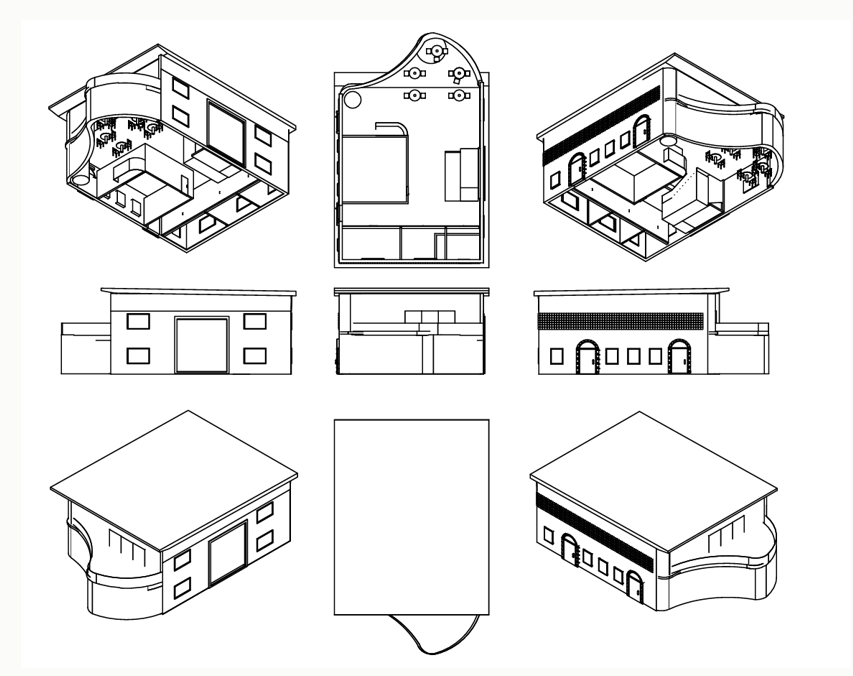AI: Machine minds, human spaces
AI is revolutionising the way that architects behave, work and live. Today’s blog will consider new ground-breaking concepts which are changing up the life of a modern day architect, examining the different ways work is changing and discovering what the day to day life for an architect will look like in both the present and future contemplating the impact of facets of AI including, virtual reality, visual rendering and machine learning.
We’ll firstly take a look at the potential risks of AI to the architectural community and then round up on a positive note considering its great benefits.
AI is a powerful tool, stemming from the knowledge of the entire internet to date. With all this information to hand, artificial intelligence is sure to be beyond capabilities of a single person in certain attributes. I myself have already seen evidence for this. I have seen it look at a photograph of a building and instantly create accurate elevations and plans and even vice versa within seconds. Inconceivable to a person from just 5 years ago. However, despite its powerful properties, there are still inherent dangers to using artificial intelligence.
This is well communicated by Eirini Makarouni on ‘Architizer.com’ where she states: “There’s also a risk of homogenization, where buildings designed by AI algorithms may lack the diversity and richness that stem from individual human perspectives and cultural influences.”
Indeed, this can be evidenced to be true. Whilst an AI may mix everything it has learnt together into one project, an AI cannot experience architecture in a city in the same way a child can play football in an Italian plaza beside the Duomo di Milano. It can’t live amongst a city or yet understand the cultural differences which differentiate London from Tokyo or even Tokyo to Osaka. These cultural nuances are currently only percievable to the human kind.
Psychologist Frank Rosenblatt famously said in 1958, “Stories about the creation of machines having human qualities have long been a fascinating province in the realm of science fiction; yet we are about to witness the birth of such a machine, a machine capable of perceiving, recognizing and identifying its surroundings without any human training or control.”
Indeed this may very well be coming into fruition in our modern future, already AI models such as ‘ChatGPT’ have been known to commonly make mistakes, threaten users, perform insider trading and advise illegal activity. With this in mind, to the context of architecture, AI is bound to make mistakes and some lessons will only be learnt through errors having to happen in the first place.
To see what AI can really do, I had a go, myself, at putting it to the test.
For the prompt, I provided a reference image I had created myself, I then asked the AI to create a 3D visual representation of the building based upon the provided image.
Figure 1: A prompt image I provided the artificial intelligence
Figure 2: The image the artificial intelligence generated in response to my prompt.
Figure 3: A CAD render that I previously created which also made the figure 1 drawing which I used to prompt the AI. If the AI was perfect figure 2 may have looked like this
Incredible, whilst we can see obvious mistakes made: in figure two the AI presents two staircases, neither looking realistic and the balcony loses it’s wavy curve but despite this, the machine learning model presents a somewhat realistic depiction of a building, it includes chairs, tables, windows and doors in almost correct places. Whilst it still has a way to go, it’s incredible what has already been achieved, moreover the rate at which the AI is developing is phenominal. Soon it’s likely that we won’t be able to tell the difference between real and artificial footage, a scary reality. But whilst this new age sets in, our utilisation of the program is ever likely to increase within the realm of architecture.
If interested in learning more, my local RIBA society in Berkshire are presenting a CPD lecture at Thames Lido on the Tuesday 13th of May 7pm: Let's not just talk about AI led by Jonathan Dreyfus. An interactive session showing the practical use of AI within practice.
References
Eirini Makarouni. (2024, February 22). Human vs. Machine: Striking the Balance With AI in Architectural Design. Journal. https://architizer.com/blog/practice/tools/human-vs-machine-striking-the-balance-with-ai-in-architectural-design/
Lefkowitz, M. (2019, September 25). Professor’s perceptron paved the way for AI – 60 years too soon. Cornell Chronicle. https://news.cornell.edu/stories/2019/09/professors-perceptron-paved-way-ai-60-years-too-soon


